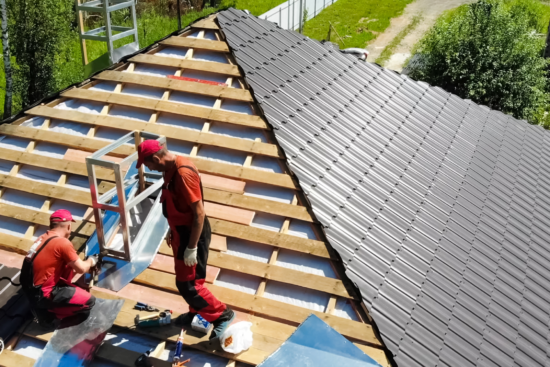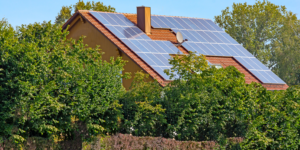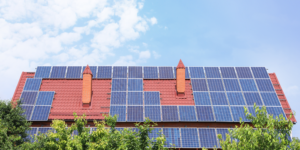© All Rights Reserved | Roof Replacement and Repair - Zaman Roofing LLC. | Website Design & CT SEO Powered by High Point SEO CT
- Google Rating5.0Based on 33 reviewsZaman Roofing - CT Roofing Contractors & Roof Repair5.0Sergey Y."Zaman Roofing” recently completed a roof replacement project in our condo complex, and we are extremely satisfied with their service. From start to finish, their team demonstrated professionalism, efficiency, and exceptional craftsmanship. They were prompt in their communication, providing detailed explanations and answering all our questions. The crew arrived on time, worked diligently, and completed the project within the estimated timeframe.Not only did Zaman Roofing exhibit outstanding technical skills, but they also ensured minimal disruption to our daily activities. They took great care to protect our property, cleaning up thoroughly each day and leaving no trace of debris behind.The quality of the new roof is outstanding. Zaman Roofing used top-grade materials and paid attention to every detail, resulting in a sturdy and visually appealing finished product. The roof has significantly enhanced the overall appearance of our condo complex.We would highly recommend Zaman Roofing to anyone in need of roofing services. Their professionalism, expertise, and attention to customer satisfaction make them a reliable choice for roof replacements. We are grateful for their excellent work and would not hesitate to hire them again in the future.Christopher Z.Zaman Roofing was AWESOME!!!! This is my third time doing a roof in CT on my third home and Zaman did an outstanding job on my rather unique roof line. They even replaced a skylight. I needed a Roof Contract in place before insurance would allow the purchase because the seller was a DeeBag. Zaman worked with my realtor, banker, etc and even waited patiently while the seller delayed the process by 4 months. The week I closed, Zaman Roofing was up and at em. Stripping, prepping and replacing. In and Out. Property was nice and clean after the work was complete. I would highly recommend.Steve TZaman Roofing, located in Berlin, CT, truly excels in providing top-notch roofing services. I am absolutely thrilled to give them a well-deserved 5-star review for their outstanding work. They have proven themselves as experts in roofing Berlin CT, and I couldn't be happier with the results.When it comes to roofing in Berlin, Zaman Roofing stands out from the competition. Their team of skilled professionals demonstrated exceptional attention to detail during the installation of my new roof. They meticulously handled every aspect of the project, ensuring both aesthetics and durability were top-notch.What impressed me the most was Zaman Roofing's commitment to customer satisfaction. From my initial contact with them, they were responsive, courteous, and eager to understand my specific roofing needs in Berlin. Their exceptional customer service throughout the entire process made me feel valued as a client.Zaman Roofing's expertise in roofing Berlin is truly commendable. They have an extensive portfolio of successful projects throughout Berlin, CT, showcasing their skill and knowledge in a variety of roofing styles and materials. Regardless of the complexity of the job, they have the necessary resources to deliver exceptional results.I cannot emphasize enough how satisfied I am with Zaman Roofing's services in Berlin, CT. Their professionalism, reliability, and dedication to their craft are unparalleled. If you're searching for exceptional roofing services in Berlin CT, Zaman Roofing is the company to choose. They will exceed your expectations in every way.In conclusion, Zaman Roofing unquestionably deserves a stellar 5-star rating for their exemplary roofing services in Berlin, CT. Their expertise in roofing Berlin and roofing Berlin CT shines through in their exceptional workmanship and customer service. I highly recommend Zaman Roofing for all your roofing needs.Gary G.Zaman replaced the roof on my 2,200 sq. ft. colonial in 2015. The workmanship was perfect. Unfortunately, over time, the top-of-the line shingles discolored. He was totally supportive in getting the manufacturer to replace them at no cost to me. He just replaced the roof with the new shingles. It was another perfect job. It was completed in one day. The crew was great and they cleaned the area spotless.Chris DWe used Zaman Roofing for our Roof and Gutter Replacement, I acquired 5 quotes for the work and found Zaman to be the most reasonable, it was a Good Decision to choose Zaman Roofing, Seweryn was Professional in every aspect and the Clean-up was nothing short of Amazing, I would Highly Recommend using Zaman RoofingRobert D.Excellent Service and Value - great crew and easy to deal with - highly recommended !Sunghoon P.Great work and reasonable price. I am so happy with their service. I asked a bunch of questions before and after the service and his responses were very prompt and straight to the point. Highly recommend.Adrienne M.I am so pleased that I used this company. My new roof looks fantastic. Such a hard working crew. Seweryn was informative and professional. Price was very completive. Don't hesitate to use them you will be very satisfied. Highly recommend!Nancy M.Good communication, timely response and knowledgeable. Very happy with our experience and highly recommend this company.Beata M.We used Zaman for our roof replacement recently and are very pleased. They replaced our roof in one day and gave us a very competitive quote. Good quality of work. Highly recommended.Lori K.They were here when they said they would. Professional & left everything neat ,cleaned up everything. They were in & out in a day & a half. Would recommend Zaman roifing.Dan R.A+ service, professional and quick response time.Anna G.Zaman and his crew provide great workmanship they installed new roofs they take great pride in the work they do. They were punctual and did a amazing job with the roof installation and clean up. Highly recommend Zaman Roofing to family and friends. Thank you for the opportunity to work with such a amazing contractorScott M.Awesome contractor, I would highly recommend him to family & friends. Seweryn & his crew were here on time & worked diligently. They were the happiest workers I've ever dealt with (I am a former construction project manager with the Federal government). Any & all questions were answered. My neighbors couldn't believe they finished the job in one day & complimented how great the new roof looks.Clement D.Great roofing contractors. I love to recommend it to my friends and family.Karen 9.With the quality, price, timeliness, all round nice guy and great crew, Zaman Roofing LLC is what other companies aspire to be.... Clean, helpful and a pleasure to recommend....james C.Excellent experience from start to finish, all appointments and work times met in a timely fashion, workmanship and clean up left nothing to be desired.Would be a definite recommendation, very pleased.Margaret B.I had obtained multiple quotes and did my due diligence research and Seweryn Zaman came back with fair price and good recommendations. He was professional, explained everything that he was going to do and never once he rushed me during decision process. He showed up on time with his hard working crew and finished my roof in one day. I was amazed with his crew who worked like busy bees. Very impressed with the clean up process and the end product. Two months after he finished my roof he was still helping me deal with the insurance company making sure I had everything I needed. Thank you SewerynSteve B.Very professional and easy to work. The crew came in, replaced my roof and then cleaned up everything! Highly recommended.Jim O.Competitive quote among four others. Seweryn Zaman provided larger color samples of the shingle colors we were interested in. He obtained the building permit, showed up on the day expected with his entire crew. Our older roof was on 24" trusses and needed more plywood replaced than anticipated. He got the additional sheets replaced on the day of the re-roofing. The crew worked with him late until the job was done and picked up every piece of old debris. The roof passed final town inspection with no concerns. Zaman Roofing is easy to deal with; he's responsive on text messages and phone calls. I used them in the past for an emergency repair and he found a well-hidden leak from the builder.Dale C.The crews did a good job, and the leader of the crew did a great job when they replaced the roof of my house in Farming on 7/6&7 this year. When they worked on the project, they worked professionally and in detail. We are very pleased with the work they have done, and highly recommend people to have the company worked on their roof projects.Forrest B.Zaman's was very professional, excellent quality of work and very responsive to our needs. This roofing experience was excellent from start to finish and provided an excellent value. Would certainly recommend them to any friend.Yonatan M.We used Zaman Roofing to replace our roof in 2019 and could not be happier with the service and product. A highly professional company and great personal interaction with the owner. The workers took great care of our landscaping, and the owner was there frequently to supervise the work and take care of finishing touches like flashing the chimney. We have had zero issues since then and highly recommend this company.Quinn V.Zaman was awesome. He was communicative, on-time, and was able to give me a quick inspection of our roof despite the rain. I rarely have a contractor tell me that I didn't need to spend any money, but Zaman told me my roof was fine for the next several years.magdalena K.We recently used Zaman Roofing to replace our 26-year-old roof. Right from the start they were great! Sevy was extremely professional and knowledgeable and gave us a great quote. Everything was done as they described and the final project looked great. The owner was on the job from start to finish as he promised.Ariadna G.Our experience with Zaman Roofing was excellent. I was very impressed with both their work and their customer service. Seweryn was very knowledgeable and professional.Larry G.What a wonderful business. Very responsive. They showed up exactly when expected, completed the project quickly and accurately and left no trace after clean up. All with a very competitive price. I would highly recommend Zaman to anyone looking to have roofing work done.STEVE R.I was very pleased with the roof and gutter repairs performed by Zaman Roofing on two of my buildings. Good workmanship and fair prices, I would recommend and use again.Danielle D.These guys stripped and reshuffled my roof is 1 day! They did an awesome job. Roof is beautiful. He uses a dump trailer which is great and they cleaned up well. Very happy with the work. Also pricing was fair.

Exploring Sustainable Roofing Options: Eco-Friendly Choices for Your Home
Category: Roofing • November 30, 2023
We explore home sustainability roofing choices! Eco-friendly building and renovation options are more significant in today’s eco-conscious world. Many ignore the roof, a key part of any property. Sustainable roofing materials help the environment and benefit you and your property.
The Importance of Sustainable Roofing
Sustainable roofing is crucial. With climate change and environmental considerations in mind, we must make conscious house choices. A sustainable roof reduces carbon emissions and boosts energy efficiency. Energy conservation is a major benefit of sustainable roofing. These roofing materials reflect sunlight and absorb less heat, keeping your home cooler in summer and decreasing air conditioning needs.
Another factor is water conservation. Sustainable roofs efficiently capture rainwater for gardening and toilet flushing. This minimizes water demand and utility bills. Sustainable roofs also reduce the urban heat island effect, which makes cities warmer than rural regions owing to human activity and lack of green space.
Choose lighter-colored reflecting materials or create rooftop gardens to reduce this issue. Sustainable roofs are environmentally friendly and may boost home value. An eco-friendly roof may attract purchasers if you sell your property in the future. Many homeowners today value sustainability when buying. Sustainable roofing does more than only cut energy use and landfill waste; it also improves property value and combats urban heat islands. Why choose a standard roof when you can go green? Let’s explore amazing possibilities that will change your home and planet!
Types of Sustainable Roofing Materials
There are many sustainable roofing alternatives that decrease energy expenses and environmental effects. Here are some common eco-friendly roofing materials:
- Metal Roofing: Metal roofs are sturdy and long-lasting, making them environmentally friendly. They can be recycled after use because they are usually composed of aluminum or steel. Sunlight reflects off metal roofs, cooling your home.
- Solar Shingles: Solar shingles mix renewable energy with regular roofing. These shingles generate electricity from sunlight with photovoltaic cells. Solar shingles may cost more upfront, but they can lower your grid power use and save you money over time.
- Cool Roofs: Cool roofs reflect more sunlight than dark roofs, minimizing heat transfer in hot weather. They use reflecting coatings or light-colored materials like white membranes or tiles.
- Recycled Rubber Roofing: Made from recycled tires, rubber roofing is durable and insulating while reducing landfill trash. It withstands harsh weather and water damage.
- Green Roofs: Covering a roof with flora protects it from high temperatures, improves air quality, and provides wildlife habitat. They reduce stormwater runoff by absorbing rainwater.
For a classic, eco-friendly roof, select wood shakes/shingles from sustainably managed forests recognized by groups like Forest Stewardship Council (FSC). Careful installation might extend their lifespan.
Benefits of Choosing Eco-Friendly Roofing Options
Green home improvements are excellent for the environment and your wallet. You may make a big difference by choosing sustainable roofing.
Energy efficiency is a fundamental benefit of eco-friendly roofing materials. Summer cooling expenditures are lower with sustainable roofs because they reflect more sunshine and absorb less heat.
Eco-friendly roofing improves indoor air quality. When heated, traditional asphalt shingles produce hazardous compounds. The environment is healthier with sustainable resources like recycled rubber or wood.
Sustainable roofing also boosts property value. Potential purchasers are increasingly interested in green buildings, especially eco-friendly roofing, as homeowners become more environmentally conscious.
Choose an eco-friendly roof to lower your carbon footprint and fight climate change. Building your roof with renewable or recycled materials helps create a greener future for future generations.
Considerations When Choosing a Sustainable Roof
There are several factors to consider while choosing a sustainable roof for your home. Your climate comes first. It’s important to choose a roofing material that can endure the weather and maximize energy efficiency in your environment.
Cost is another consideration when choosing a sustainable roof. Eco-friendly roofing materials may cost more upfront but can save money over time due to energy efficiency and less maintenance.
When choosing a sustainable roof, consider your home’s appearance. You want something that matches the architecture, improves curb appeal, and is eco-friendly.
Consider local roofing material limits. Before choosing a roof sustainability standard, check your local regulations.
You can choose a sustainable roof that fulfills your environmental aims and homeowner demands by considering these factors.
Top Sustainable Roofing Options for Your Home: Pros and Cons
Many eco-friendly roofing materials are available for your property. Before choosing, consider the benefits and downsides of each material.
Popular roofing materials include metal. Durable metal roofs can endure 50 years or more with proper maintenance. The lightweight design reduces stress on your home’s structure. Metal roofs reflect sunlight, keeping your home cooler in summer and lowering energy expenditures.
For a natural roof, use cedar shakes or shingles. Cedar is a sustainable resource with natural insulation that can save household energy use. Cedar roofs need frequent maintenance to prevent moss and damage.
For a modern look, green roofs are inventive. Living flora grows on waterproofing membranes and soil or substrate on green roofs. Insulation, rainwater runoff reduction, and urban air quality are their benefits.
Recycled rubber shingles are a greener roofing option than asphalt. These durable, insulated tiles are made from recycled tires or other rubber items.
How to Make the Switch to a Sustainable Roof
Switching to a sustainable roof reduces your environmental effects and saves money. Just how do you make this change? Steps to transition to a sustainable roof:
- Learn and research: Research market-available sustainable roofing materials. Discover their merits, downsides, durability, and maintenance needs.
- Determine your needs: Consider climate, money, aesthetics, and local restrictions when choosing a sustainable roofing alternative.
- Talk to specialists: Ask roofing contractors or sustainability experts for advice on choosing the correct material for your home. They may evaluate your roof’s condition and suggest choices based on size, slope, and other considerations.
- Compare rates and services from numerous trustworthy contractors after narrowing your choices.
- Plan installation: Schedule installation for weather conditions that will help the new roofing material stick.
- Dispose responsibly: If you’re replacing an old roof with a greener one, recycle or repurpose old materials.
Remember that switching to a sustainable roof costs more but helps the environment and your cash in the long run!




